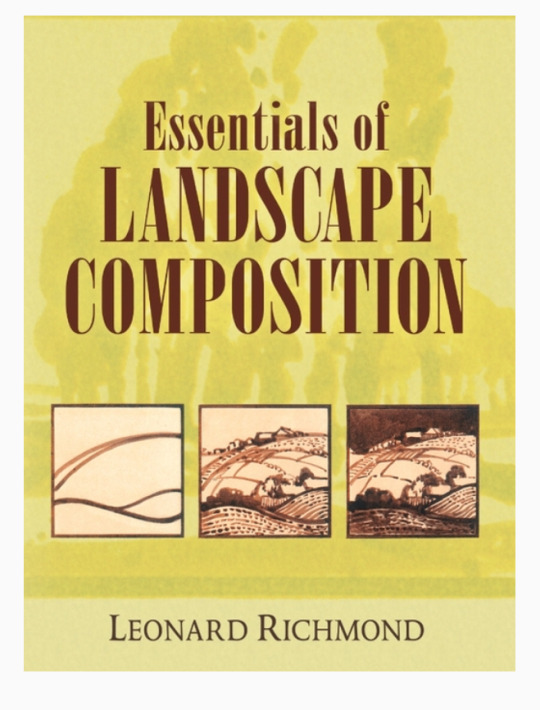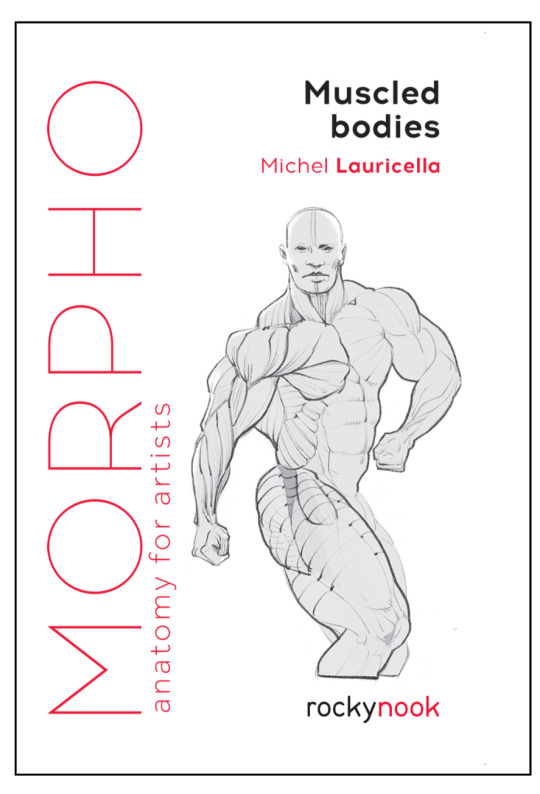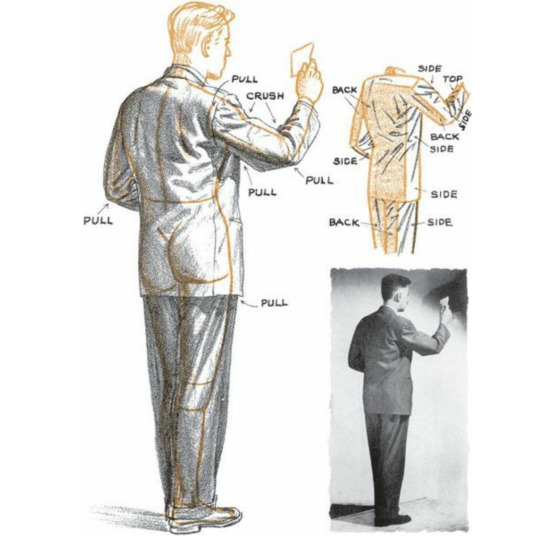#ive also been watching a lot of extremely useful videos about composition & in this specific piece i used all the knowledge ive gathered!
Text
I wish I never made eye contact with you.


RAAGHHHHHHH LET'S SEE THIS THING REACH 13 NOTES!!!!!!!!!!!! WOOHOOOOO THANK YOU FOR ALL OF YOU WHO ARE HERE I HOPE Y'ALL ARE HAVING A GOOD EVENING!!!!!!
TROLLS NOIRE AU BY THE AMAZING @artroc-ity !!!!! READ COLD CASE OF MY HEART TODAY!!!!!!!!!
#*siiighhhhh*i want someone to look at me. it doesn't even have to be that look chaz is giving hickory i just want someone to look at me#and think deeply about me for more than 5 seconds#just trhink about meeeeeee#whatever. someone is probably thinking about me right now#i mean a lot to a lot of people and i love all of them#i hope im not just some random tumblr user..... but a memorable random tumblr user....#okay enough monologing have somr gay yearning#are they going to punch eachother after this? are they gonna make out? will they just continue on in comfortable silence?#thats your choice#IM REALLY FUCKING PROUD OF MYSELF AND I LOVE THIS COLORING STYLE!!!!!#ITS STYLISH. ITS MOODY. AND EVEN BETTER ITS CHEAP!!!!#ive also been watching a lot of extremely useful videos about composition & in this specific piece i used all the knowledge ive gathered!#life is so beautiful. my art is wonderful. and im getting better and better#i hope one day i'm able to make commissions for people with traditional art#i'll send the actual sheets of paper#i wanna do that so bad#i need to open an etsy#trolls#chaz trolls#hickory trolls#chaz#hickory#chazcory#chickory#trolls noire au#tea art 🎨#Spotify#oklo makes a post
30 notes
·
View notes
Note
Heey just wanted to tell you that I adore your art, especially the way you draw Barok. You humanised him in a way I've never seen an artist do. All your characters, but especially him, look like real, soft, approachable people. I can almost see their chests expanding, I can imagine them laughing and breathing, I can tell how in love your ships are, which is very special and very rare
Your art makes me extremely emotional
(also where did you study, what books did u read, how long did it take you to learn to draw like that??)
AH thank you for the sweet ask! it really made my day to hear this TTuTT
As for your other asks, ill put them undercut with some photos and links to stuff!!
I've been drawing for about ahhhh 16 years( 8 of which are actually like serious school stuff than just a hobby) but tbh its only really been in the last 3 where i feel like ive been making actual progress in improving my stuff. but thats my personal path in art and its always gonna be different for you or anyone else.
anyways 3 years ago i made some changes to my drawing habits and study methods that were like. real specific to where i wanted my art to go (cleaner lines, better foundations, gesture, etc etc). I worked on thing one at a time tho!! it can get overwhelming real quick if youre not careful. So the stuff im gonna give you is geared towards....well, me? both in content im searching for and just the classes that resonate how i like learning
OK BOOKS:
CLEANER LINES. I use to have a habit of making like EXTREMELY sketchy and unconfident lines. This is a landscape book that i literally just copied every single thumbnail. Helped me get into the habit of both using only a few strokes to get an idea across and breaking down complicated subjects into shapes


ANATOMY. Morpho series. Its not a how-to-book tho its just a compilation of an artists break downs. This one is my fav tho. And helped a lot when i was struggling to understand like ALL BODY PARTS


CLOTHING. This is probably my fav clothing book. Very short and published in the 1940s. Its helpful specifically to ME cause its clothing is closer to TGAA outfits(mens) than more modern books LOL


And now CLASSES. I do actually have an art degree from a university and let me tell you. I was left SEVERELY lacking any skills i needed to go into the industry I was interested in 👍 (not cause of the professors but cause the school itself was actively killing its art department :p) So i was kinda just left looking into online stuff on my own (AND COMMUNITY COLLEGE!!!! MY BELOVED AFFORABLE CLASSES )
NEW MASTERS ACADEMY. Its a subscription-have access to all the videos for a month to a year- kind of thing. cheapest is about $40 a month. REALLY REALLY helped my anatomy and foundations. Steve Huston: Good for entire step by step anatomy break downs. Micheal Mattesi & Karl Gnass: Gesture. I've watched a handful of other videos but these instructors were the most helpful to me
DRAWING AMERICA. A lot more pricey. Around $100-$300. but youre basically paying to own the recorded classes and keep them forever. I've only really taken Will Westons classes cause he focuses on BGS and props. But he also has some nice composition stuff thrown in there too.
(I've taken a LOT of online courses and the thing about a majority of them is that they arent really taught by professors or teachers so they tend to be more like a giant Tip video than an actual lesson plan. And if u haven't taken an art class before the difference is HUGE)
and i think thats it? i guess if theres anything else i can give u its this tip:
you mentioned my art is humanizing. Thats a comment ive heard a few times and i guess its odd to say but i dont really know what youre seeing? Like i understand the "ships in love" but cause i did go out of my way to draw sappy love faces 10 bajillion times until i was satisfied. But alive? hmmmmmm like THINK i might know what you may be responding to. Its a combo of the gesture and my effort in trying not to loose the energy of the original sketch when i go to clean it up. And what ive figured out is this. Youre not outlining or tracing your under sketch youre REDRAWING it .
i put the under sketch and clean up next to each other so hopefully this makes sense but like. when i do an under sketch im only really focused on building the figure. When u build a figure youre drawing out bigger shapes and breaking them down into smaller and smaller ones. Lines feel like they have more energy at this stage because the circles and cylinders are fully drawn out, making them have a continuous momentum. So then when it comes to the clean up stage. im not looking to trace the exact lines i drew out (if u notice my final isnt a 1 to 1 copy of the og) im trying to follow the flow of the original lines. thats why youll see lines go thru the figure sometimes, its me trying to keep the energy in that line even if its not suppose to be very long.


idk if this makes any sense at all.....and maybe i should have recorded me actually drawing this out but [shrug emoji] i could do it later if anyone is interesting in wtf is happening here. CAUSE I SWEAR ever since i started cleaning my sketches like this i started to get those comments. but also i could be wrong too.....then i REALLY dont know what im doing ahahahah
Anyways, i hope something in here ends up helping you anon!!! GOOD LUCK ARTING I BELIEVE IN YOU :O
#asks#art reference#the art of a lemon wedge#ALSO :D#ahaha barok is one of my favs to draw so im like extra happy you like him
8 notes
·
View notes
Text
Slow Moving Training: Yoga
I like intensity when I train. Lifting heavy, running sprints, playing Ultimate Frisbee. I keep it brief, and the foundation is always a lot of slow movement throughout the day—easy runs, long walks or hikes, rarely sitting—but I go hard when I “work out.”
What if you were to go slow, on purpose?
Entire schools of physical culture are founded upon slow, deliberate movements. They squash momentum and lambast rapidity. They’re difficult in a different way. They require patience and fortitude.
Take yoga.
Yoga is a loaded word. It’s at once religious practice, spiritual tradition, a way of honing mind, body, and spirit. It’s diet, medicine, meditation. The history of yoga is hard to parse; different sources give different historical timelines. What’s obvious is that there’s no “one yoga.” So, what I’ll talk about is how most of us reading typically conceive of it: Stretching with a spiritual veneer.
This is probably the most common form of slow physical training practiced worldwide. My wife’s done it for decades, and I’ve joined in on more than a few classes with her. It’s not my favorite thing—I don’t seek it out on a regular basis—but it is a great workout, and I always come away in a different headspace than when I started. The benefits of yoga are pretty well-established:
Yoga and Flexibility
As a series of poses and stretches that test and extend your joints’ range of motions, yoga should improve flexibility. That’s one of its express purposes. Sure enough, in almost every population, it seems to work.
It improves the flexibility and balance of college athletes and elderly adults. In older women and injured industrial workers, it improves hamstring flexibility and spinal mobility.
Yoga for Older Adults
Being slow-paced, deliberate, and controlled makes yoga very effective for older adults (or beginners to physical training) who are unsure of their abilities and want to improve their physical (and mental) faculties.
A 12-week Thai yoga program helped older adults improve their ability across a range of basic physical functions, including back scratching, standing up from chairs, sit and stretch, and the 8 foot up and go test.
An 8-week Hatha yoga program helped older adults improve single leg balance, chair standing, back scratching, flexibility, and 8 foot up and go just as well as an 8-week strength and stretching program using machines. A later study found that the same yoga program improved executive function, including working memory and mental flexibility, in the same group of adults. A third study found that the yoga program improved cognitive function by reducing stress levels. Boy, that’s a lucky group of seniors.
Yoga and the Brain
Like most every other physical training methodology ever studied, yoga improves cognitive function. We see this across a range of populations, but especially in older folks at the greatest risk of cognitive dysfunction.
Compared to walking, yoga decreases anxiety, increases well-being, and boosts GABA concentrations in the hypothalamus. This is incredibly cool. Everyone knows that exercise is often the ideal antidote to anxiety and depression. It works, its side effects are beneficial, and it requires no prescription. But this was one of the first studies to show a correlation between increased GABA from physical activity and reduced anxiety levels.
Yoga and Stress
Any type of exercise will reduce stress, as long as you avoid overtraining. Yoga is no different and seems to have particularly potent effects.
Pregnant women who followed a yoga program saw reduced perceived stress and improved heart rate variability (an objective indication of increased resilience to stress).
After doing a yoga-based guided relaxation, people with baseline elevations in sympathetic nervous system activity—who were already stressed out—saw those level off. Those who weren’t stressed didn’t. This is important because it shows yoga is more of an adaptogen, helping you normalize stress levels only if they need normalizing.
In a group of people awaiting organ transplantations (which has got to be a trying experience), doing laughter yoga (laughter+stretching) improved heart rate variability and mood in both the short and long-term.
Yoga and Strength
Believe it or not, yoga can increase strength. Part of strength, after all, is the ability to get into full range of motion. If you’re strong only through a small range of motion, is that really strength?
Yoga also increases muscular endurance. Again, this isn’t absolute strength, but it’s a component of muscular capacity that enables the expression of strength.
I wouldn’t rely on yoga for your strength. Instead, treat it as a complement to your strength training.
Yoga and Various Diseases
Given yoga’s reputation as a “healing art,” many studies have looked into yoga for the treatment of various diseases. Unfortunately, most of the studies have been inconclusive or come up with negative results (doesn’t work, doesn’t hurt), like with schizophrenia, multiple sclerosis, asthma. At the least, it probably won’t hurt, but you shouldn’t rely on it in lieu of real treatment.
It looks promising for a few, though: depression (as an adjunct), breast cancer (not as a cure, but for anxiety, quality of life, and certain symptoms), type 2 diabetes (by improving metabolic health), Parkinson’s (pilot study showing improvements in strength and function)
That said, studies don’t indicate that yoga offers anything above and beyond other types of training for these diseases. Still, there might be more to this picture—at least from an anecdotal perspective.
Is Yoga Safe?
It goes without saying that anything worth anything carries a bit of risk. Driving to work (or the gym) risks a car accident. Falling in love risks heartbreak. Going into business for yourself risks failure. And training risks injuries.
Yoga is no different. Things happen. You go too far past your joint’s capacity, and pull something, end up sore for weeks. You lose too much water and electrolytes during the hot yoga session, and feel lightheaded on the drive home. You’re swept away by a charismatic yogi, wind up a member of his harem wearing black and white Nikes. We’ve all been there.
Luckily, studies show that yoga is as safe as “usual care” and other types of exercise. There’s quibbling there, to be sure. Yoga is probably safer than free climbing and boxing.
Still, I’d question becoming a “yoga person,” though. I know I probably have several dozen reading right now, and I love you. But don’t assume yoga covers all your physical bases. I’m not fully convinced that yoga is enough for total fitness and optimum strength. A day or two a week on top of some lifting, sprinting? Great. I bet most strength athletes could use a little yoga, even, if they aren’t doing mobility training already.
Yoga has a lot of intangible benefits, too, effects that studies don’t really capture very well.
It forces flow. This is one of the great features of exercise, one that goes unreported and ignored. The physical effects training has on your body composition, your muscles, your cardiovascular system, your capacity to interact with the world with force and skill are all extremely important. But when you’re fully engaged in a physical activity, when data is flowing through your neuromuscular pathways, when you can do nothing but immerse your entire being in the movement, you reside in the flow state. No brain hacks, gadgets, or supplements required. And although I’m not that experienced with yoga, whenever I’ve done it I’ve noticed myself slipping into that state without even trying. Actually, I notice it after the class, because during the class you’re fully engaged and not thinking about thinking.
It trains grit. Most studies show that you can’t teach grit—or stick-to-it-iveness—and that it’s mostly hereditary. I buy that, but I think yoga is different. Yoga is very uncomfortable, and you must hold the holds for sometimes minutes at a time. That requires tolerance of discomfort. Some of it is that yoga selects for individuals who can tolerate extreme discomfort. Even if that’s the case, yoga will certainly hone your existing grit.
It’s more than stretching. A typical yoga class will incorporate not just the physical act of contorting your body, holding poses. It also emphasizes the importance of breath, and of integrating your breath with your movement. This focus on breath turns the session into a de-facto meditation. Many classes even end with a full-on guided meditation. Yoga is a nice package deal for people who otherwise wouldn’t incorporate these things into their lives.
Join a class.
Historically, yoga was a taught discipline. You didn’t grab a wax tablet of poses and slink off to the jungle to learn yoga by yourself. You sought the tutelage of a master. Things are different now. There are effective and helpful videos explaining how to do specific poses and follow routines. These are extremely helpful, but I don’t think they’re a good replacement for a good teacher.
Why?
If you’re dedicated, you can get the same effect watching yoga Youtube videos with your cat, but it’s easy to check out when things get too hard. You might grab your phone to browse Instagram in between poses. You might cut things short because it’s uncomfortable and no one’s counting on you finishing. It’s different than strength training at a home gym because the routines are so uncomfortable and last so long. Mustering the will to do a set of heavy deadlifts is manageable for many. Mustering the will to hold a difficult pose for two minutes is not. A teacher (or class) takes willpower out of the equation. As long you get yourself to class, the rest falls into place.
After today’s post, I hope you’ll consider trying a yoga class. I know I’ll probably join Carrie more often. The literature is compelling and hard to ignore. But in the end, you just have to see for yourself.
Thanks for reading, everyone. Take care.
I know I have some yoga experts reading this. I know there are many different types of yoga. I’d love to hear from you. What’s your favorite type? Let loose your questions, advice, comments. I’d love to hear your perspective.
0 notes
Text
Slow Moving Training: Yoga
I like intensity when I train. Lifting heavy, running sprints, playing Ultimate Frisbee. I keep it brief, and the foundation is always a lot of slow movement throughout the day—easy runs, long walks or hikes, rarely sitting—but I go hard when I “work out.”
What if you were to go slow, on purpose?
Entire schools of physical culture are founded upon slow, deliberate movements. They squash momentum and lambast rapidity. They’re difficult in a different way. They require patience and fortitude.
Take yoga.
Yoga is a loaded word. It’s at once religious practice, spiritual tradition, a way of honing mind, body, and spirit. It’s diet, medicine, meditation. The history of yoga is hard to parse; different sources give different historical timelines. What’s obvious is that there’s no “one yoga.” So, what I’ll talk about is how most of us reading typically conceive of it: Stretching with a spiritual veneer.
This is probably the most common form of slow physical training practiced worldwide. My wife’s done it for decades, and I’ve joined in on more than a few classes with her. It’s not my favorite thing—I don’t seek it out on a regular basis—but it is a great workout, and I always come away in a different headspace than when I started. The benefits of yoga are pretty well-established:
Yoga and Flexibility
As a series of poses and stretches that test and extend your joints’ range of motions, yoga should improve flexibility. That’s one of its express purposes. Sure enough, in almost every population, it seems to work.
It improves the flexibility and balance of college athletes and elderly adults. In older women and injured industrial workers, it improves hamstring flexibility and spinal mobility.
Yoga for Older Adults
Being slow-paced, deliberate, and controlled makes yoga very effective for older adults (or beginners to physical training) who are unsure of their abilities and want to improve their physical (and mental) faculties.
A 12-week Thai yoga program helped older adults improve their ability across a range of basic physical functions, including back scratching, standing up from chairs, sit and stretch, and the 8 foot up and go test.
An 8-week Hatha yoga program helped older adults improve single leg balance, chair standing, back scratching, flexibility, and 8 foot up and go just as well as an 8-week strength and stretching program using machines. A later study found that the same yoga program improved executive function, including working memory and mental flexibility, in the same group of adults. A third study found that the yoga program improved cognitive function by reducing stress levels. Boy, that’s a lucky group of seniors.
Yoga and the Brain
Like most every other physical training methodology ever studied, yoga improves cognitive function. We see this across a range of populations, but especially in older folks at the greatest risk of cognitive dysfunction.
Compared to walking, yoga decreases anxiety, increases well-being, and boosts GABA concentrations in the hypothalamus. This is incredibly cool. Everyone knows that exercise is often the ideal antidote to anxiety and depression. It works, its side effects are beneficial, and it requires no prescription. But this was one of the first studies to show a correlation between increased GABA from physical activity and reduced anxiety levels.
Yoga and Stress
Any type of exercise will reduce stress, as long as you avoid overtraining. Yoga is no different and seems to have particularly potent effects.
Pregnant women who followed a yoga program saw reduced perceived stress and improved heart rate variability (an objective indication of increased resilience to stress).
After doing a yoga-based guided relaxation, people with baseline elevations in sympathetic nervous system activity—who were already stressed out—saw those level off. Those who weren’t stressed didn’t. This is important because it shows yoga is more of an adaptogen, helping you normalize stress levels only if they need normalizing.
In a group of people awaiting organ transplantations (which has got to be a trying experience), doing laughter yoga (laughter+stretching) improved heart rate variability and mood in both the short and long-term.
Yoga and Strength
Believe it or not, yoga can increase strength. Part of strength, after all, is the ability to get into full range of motion. If you’re strong only through a small range of motion, is that really strength?
Yoga also increases muscular endurance. Again, this isn’t absolute strength, but it’s a component of muscular capacity that enables the expression of strength.
I wouldn’t rely on yoga for your strength. Instead, treat it as a complement to your strength training.
Yoga and Various Diseases
Given yoga’s reputation as a “healing art,” many studies have looked into yoga for the treatment of various diseases. Unfortunately, most of the studies have been inconclusive or come up with negative results (doesn’t work, doesn’t hurt), like with schizophrenia, multiple sclerosis, asthma. At the least, it probably won’t hurt, but you shouldn’t rely on it in lieu of real treatment.
It looks promising for a few, though: depression (as an adjunct), breast cancer (not as a cure, but for anxiety, quality of life, and certain symptoms), type 2 diabetes (by improving metabolic health), Parkinson’s (pilot study showing improvements in strength and function)
That said, studies don’t indicate that yoga offers anything above and beyond other types of training for these diseases. Still, there might be more to this picture—at least from an anecdotal perspective.
Is Yoga Safe?
It goes without saying that anything worth anything carries a bit of risk. Driving to work (or the gym) risks a car accident. Falling in love risks heartbreak. Going into business for yourself risks failure. And training risks injuries.
Yoga is no different. Things happen. You go too far past your joint’s capacity, and pull something, end up sore for weeks. You lose too much water and electrolytes during the hot yoga session, and feel lightheaded on the drive home. You’re swept away by a charismatic yogi, wind up a member of his harem wearing black and white Nikes. We’ve all been there.
Luckily, studies show that yoga is as safe as “usual care” and other types of exercise. There’s quibbling there, to be sure. Yoga is probably safer than free climbing and boxing.
Still, I’d question becoming a “yoga person,” though. I know I probably have several dozen reading right now, and I love you. But don’t assume yoga covers all your physical bases. I’m not fully convinced that yoga is enough for total fitness and optimum strength. A day or two a week on top of some lifting, sprinting? Great. I bet most strength athletes could use a little yoga, even, if they aren’t doing mobility training already.
Yoga has a lot of intangible benefits, too, effects that studies don’t really capture very well.
It forces flow. This is one of the great features of exercise, one that goes unreported and ignored. The physical effects training has on your body composition, your muscles, your cardiovascular system, your capacity to interact with the world with force and skill are all extremely important. But when you’re fully engaged in a physical activity, when data is flowing through your neuromuscular pathways, when you can do nothing but immerse your entire being in the movement, you reside in the flow state. No brain hacks, gadgets, or supplements required. And although I’m not that experienced with yoga, whenever I’ve done it I’ve noticed myself slipping into that state without even trying. Actually, I notice it after the class, because during the class you’re fully engaged and not thinking about thinking.
It trains grit. Most studies show that you can’t teach grit—or stick-to-it-iveness—and that it’s mostly hereditary. I buy that, but I think yoga is different. Yoga is very uncomfortable, and you must hold the holds for sometimes minutes at a time. That requires tolerance of discomfort. Some of it is that yoga selects for individuals who can tolerate extreme discomfort. Even if that’s the case, yoga will certainly hone your existing grit.
It’s more than stretching. A typical yoga class will incorporate not just the physical act of contorting your body, holding poses. It also emphasizes the importance of breath, and of integrating your breath with your movement. This focus on breath turns the session into a de-facto meditation. Many classes even end with a full-on guided meditation. Yoga is a nice package deal for people who otherwise wouldn’t incorporate these things into their lives.
Join a class.
Historically, yoga was a taught discipline. You didn’t grab a wax tablet of poses and slink off to the jungle to learn yoga by yourself. You sought the tutelage of a master. Things are different now. There are effective and helpful videos explaining how to do specific poses and follow routines. These are extremely helpful, but I don’t think they’re a good replacement for a good teacher.
Why?
If you’re dedicated, you can get the same effect watching yoga Youtube videos with your cat, but it’s easy to check out when things get too hard. You might grab your phone to browse Instagram in between poses. You might cut things short because it’s uncomfortable and no one’s counting on you finishing. It’s different than strength training at a home gym because the routines are so uncomfortable and last so long. Mustering the will to do a set of heavy deadlifts is manageable for many. Mustering the will to hold a difficult pose for two minutes is not. A teacher (or class) takes willpower out of the equation. As long you get yourself to class, the rest falls into place.
After today’s post, I hope you’ll consider trying a yoga class. I know I’ll probably join Carrie more often. The literature is compelling and hard to ignore. But in the end, you just have to see for yourself.
Thanks for reading, everyone. Take care.
I know I have some yoga experts reading this. I know there are many different types of yoga. I’d love to hear from you. What’s your favorite type? Let loose your questions, advice, comments. I’d love to hear your perspective.
0 notes